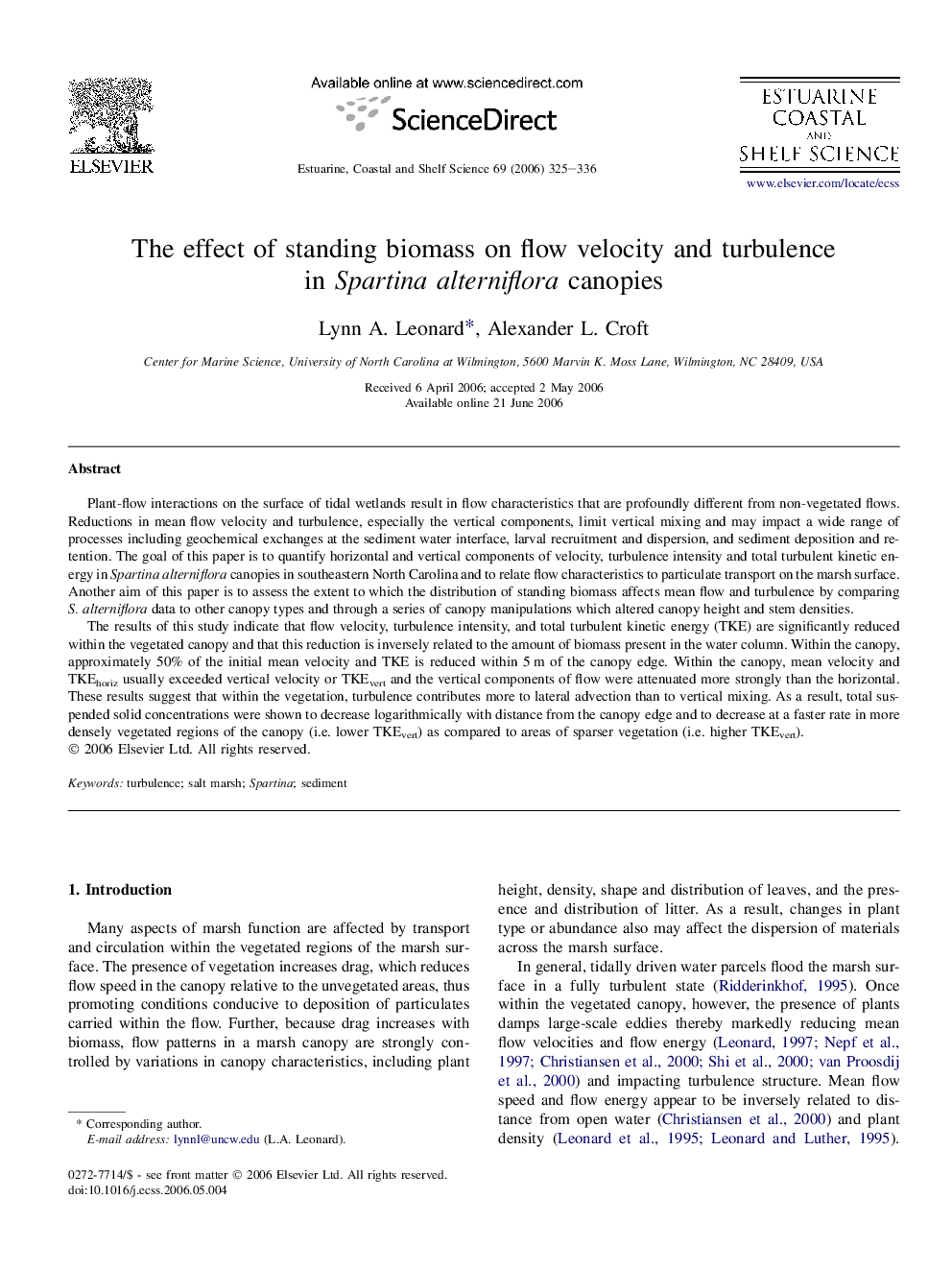| کد مقاله | کد نشریه | سال انتشار | مقاله انگلیسی | نسخه تمام متن |
|---|---|---|---|---|
| 4542222 | 1626710 | 2006 | 12 صفحه PDF | دانلود رایگان |

Plant-flow interactions on the surface of tidal wetlands result in flow characteristics that are profoundly different from non-vegetated flows. Reductions in mean flow velocity and turbulence, especially the vertical components, limit vertical mixing and may impact a wide range of processes including geochemical exchanges at the sediment water interface, larval recruitment and dispersion, and sediment deposition and retention. The goal of this paper is to quantify horizontal and vertical components of velocity, turbulence intensity and total turbulent kinetic energy in Spartina alterniflora canopies in southeastern North Carolina and to relate flow characteristics to particulate transport on the marsh surface. Another aim of this paper is to assess the extent to which the distribution of standing biomass affects mean flow and turbulence by comparing S. alterniflora data to other canopy types and through a series of canopy manipulations which altered canopy height and stem densities.The results of this study indicate that flow velocity, turbulence intensity, and total turbulent kinetic energy (TKE) are significantly reduced within the vegetated canopy and that this reduction is inversely related to the amount of biomass present in the water column. Within the canopy, approximately 50% of the initial mean velocity and TKE is reduced within 5 m of the canopy edge. Within the canopy, mean velocity and TKEhoriz usually exceeded vertical velocity or TKEvert and the vertical components of flow were attenuated more strongly than the horizontal. These results suggest that within the vegetation, turbulence contributes more to lateral advection than to vertical mixing. As a result, total suspended solid concentrations were shown to decrease logarithmically with distance from the canopy edge and to decrease at a faster rate in more densely vegetated regions of the canopy (i.e. lower TKEvert) as compared to areas of sparser vegetation (i.e. higher TKEvert).
Journal: Estuarine, Coastal and Shelf Science - Volume 69, Issues 3–4, September 2006, Pages 325–336